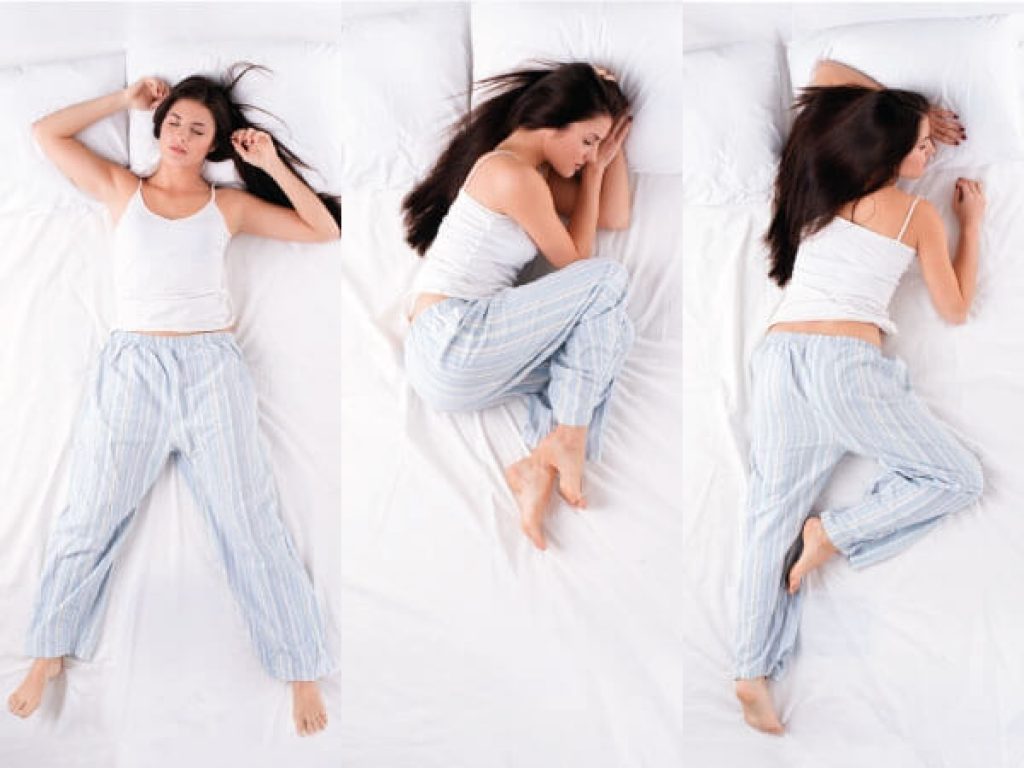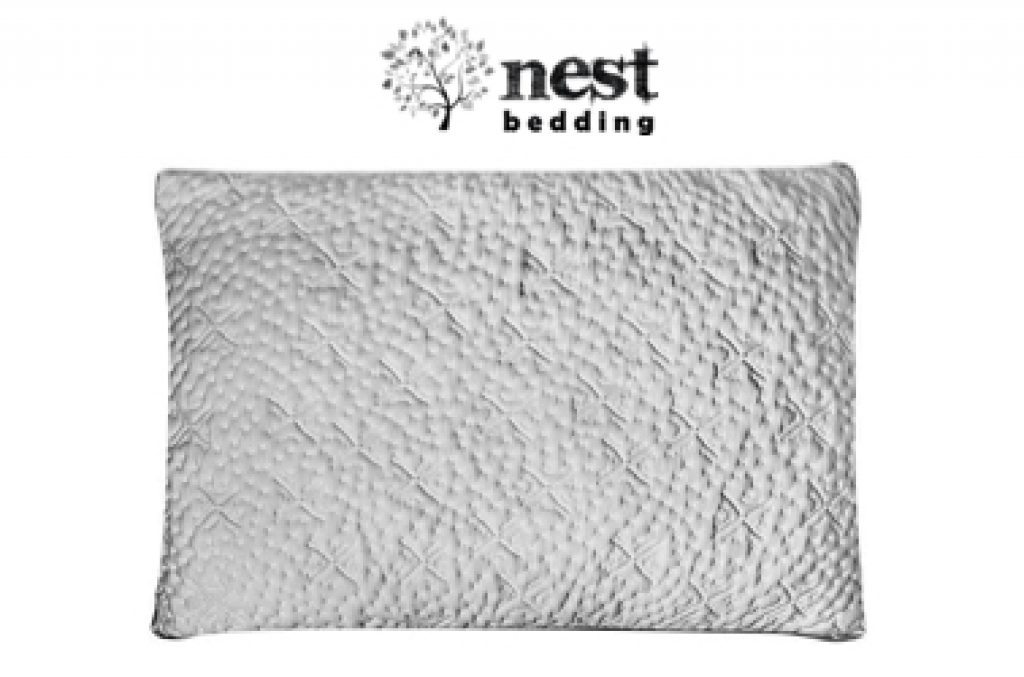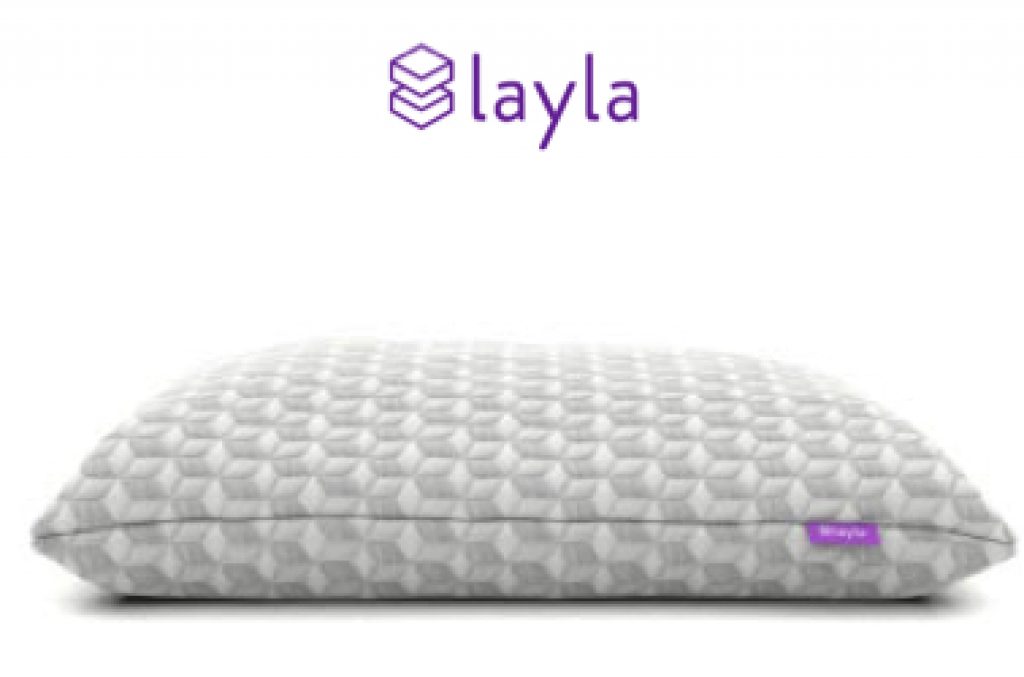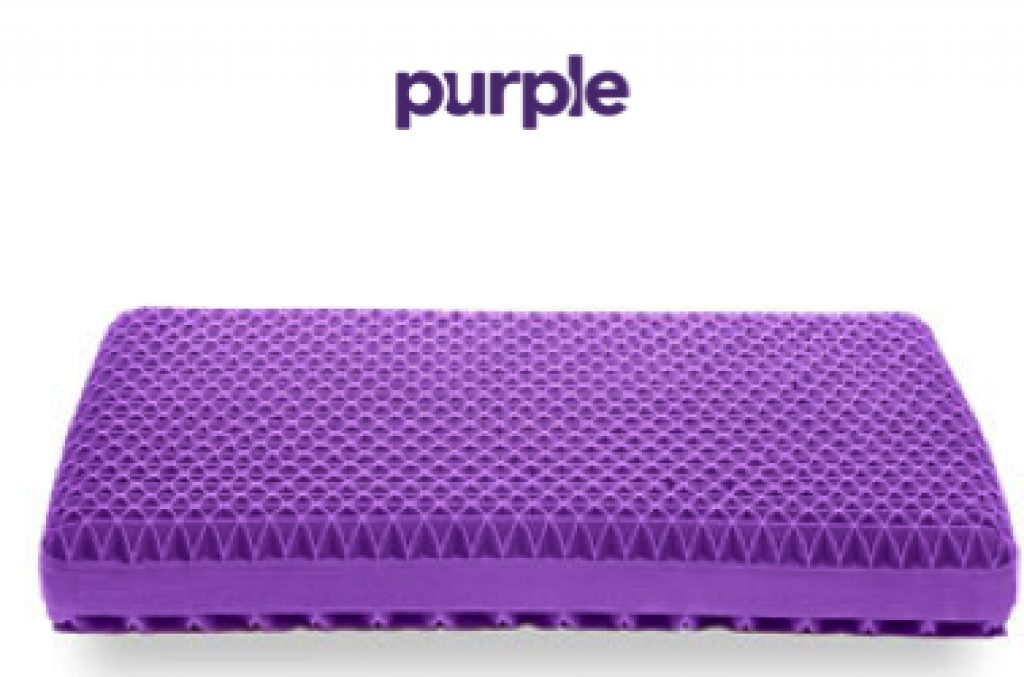
When most of us think of pillows, we first think of softness and coziness – there’s nothing like having your head sink into a soft cushion and falling asleep. But is comfort all we need from our pillows? Is there more to them than meets the eye?
The answer to that question is yes! Sleeping on the side requires the best pillow for the task!
The cushion is especially important for support of your head and the reduction in strain to the neck. And nowhere is this more important than for the side sleeper. If you sleep on your side, your head needs cradling, but more importantly, due to the shoulder being so long, creating a considerable distance from the head to the mattress, pillows must have adequate loft or height so that the cervical spine is aligned with the rest of the spinal column.
That’s it in a nutshell!
If you do not get this right, the head will tilt down if the pillow is too soft, resulting in tension to the neck muscles. For this reason, we have decided to help you find exactly what you need as a side sleeper – read on for more.
If you’re interested in seeing our overall top pillow picks go here.
Buying Advice for Sleepers

As we have already seen in the introductory words, the perfect pillows for side sleeping are a must. So, getting the right advice for the purchasing decision becomes ever more critical. But that is where we come in.
In the following section, we aim to look at the different materials and whether they are suitable for sleeping on the side. Also, loft (height), firmness and the mattress type play vital roles in determining what kind of pillows are best suited for your bed. Finally, we will take a brief look at health conditions and what a pillow can do to alleviate them.
Materials
This section is all but a taster for things to come. We will look at the different materials in more detail in a later section. But we couldn’t start the proceedings without giving you a general overview of materials suitable for side sleeping.
The material of your pillow is the singular most important factor that will determine how you sleep on your side. If the content is too soft, your head will sink into the cushion, causing unnecessary strain to the neck, potentially resulting in pain in the area. Another thing that matters concerning the material makeup of your pillow is whether it is breathable or not.
So, in short, what materials can I get my hands on and which are suitable. The primary materials for pillows are latex (synthetic or natural), memory foam, polyurethane foam, down feathers, buckwheat, bamboo, gel, cotton, and poly-fibers. For more detail, take a look at the dedicated materials’ section.
Loft
For side sleep, the loft or height is extremely important – if your pillow is of insufficient height, the neck will not be in optimal alignment with the rest of the spine. The main reason for this is that the shoulder creates distance for the head to the surface of the mattress. In order for you to get the most restful and strain-free sleep, mattress and pillow must work in concert.
How is this done?
Side sleepers generally prefer a medium to a firm bed. The main thing that the mattress needs to do is make sure that the shoulder is adequately cushioned on the bed, so that is slightly sinks, aligning the spine with the lower hip or pelvic area.
In conjuncture, pillows must keep the head in place so that the cervical spine rests on the edge of the pillow. Only with the right loft can tension to the neck muscles be reduced and the head kept nicely in position.
Firmness
Nobody wants to feel like their head is resting on a brick, and this is especially true for side sleepers because the entire side of the face comes into contact with the pillow. If pillows are too firm, it will feel uncomfortable on the skin and may cause abrasions in this region of the face.
Firmness plays another vital role for side sleepers. Ideally, the pillow should offer pleasant firmness around the edges and display a slight curvature towards the center so that the head can rest in a sort of bowl. In this position, the neck is supported, and the head can cozily come to rest on the pillow.
If the cushion were too soft, the head would tilt to the side, adding pressure to the neck muscles, resulting in pain over time. Just remember, an adult head weighs between ten and eleven pounds – that is quite a load for the neck to carry.
Size
Pillows come in various shapes and sizes, and they mainly correspond to the bed size, i.e., Standard Queen or King.
The first thing you need to decide before choosing the size of your pillow is how much space you have at your disposal on the bed. Also, consider whether you will be using the cushion for decorative purposes during the day. Comfort plays a huge role in terms of the number of pillows you want and the material. However, health conditions like neck pain or arthritis may be determining factors.
If, as a side sleeper with neck pain, you need individual support for the neck, then smaller orthopedic pillows may be the best-rated option. But if you like reading before sleep, you might like one Standard cushion and one King pillow behind it if you have a large bed to accommodate them both.
Size is a subjective matter, and there are no clear rules as to what is right.
A Good Mattress
A good mattress needs to be the perfect partner for your pillow. One will not work without the other – the two are like a symbiosis in nature where one life form cannot exist without the other – and nowhere is this more important than for side sleeping.
Again, the type of mattress largely depends on you as a person. While some of us genuinely dig a soft and cozy sleeping surface, others may balk at the mere suggestion of sinking into their mattress and feeling swamped.
What matters is that the side sleeper’s shoulder receives a perfect degree of ‘sinkage’ and the hip or pelvic region is propped up – only like this and with the top-quality pillow can the ideal spinal alignment be achieved.
And as for cushions mattresses come in various forms and sizes – there’s latex (synthetic or natural), memory foam, polyurethane foam, innerspring, airbeds, and waterbeds and they all have their pros and cons.
Health Condition
Having a health condition like arthritis, irritating skin problems, sleep apnea, sciatica, hip, neck, shoulder or back pains or scoliosis will seriously influence the type of bedding you require. Anything from the pillow and mattress to the comforter you use can impact your decision.
As always, the spinal column including the neck needs to be supported to deal with any muscle discomfort. If you have a skin disease, the materials need to be as soft as possible and preferably boast hypoallergenic properties.
In terms pillows, there are many different types to choose from:
- Cooling pillows focus on maintaining a specific temperature around the head – perfect for menopausal women and hot sleepers, go here to learn more.
- Water cushion recommended by chiropractors and therapists for optimized comfort and support.
- Cervical Pillows come in different shapes and sizes to enhance support of women’s lower body.
- Pillows that help with snoring by relieving pressure to the neck area.
- The oxygen-fostering cushion is known to increase oxygen flow to the blood vessels and the brain.
Picking the Highest Quality Material
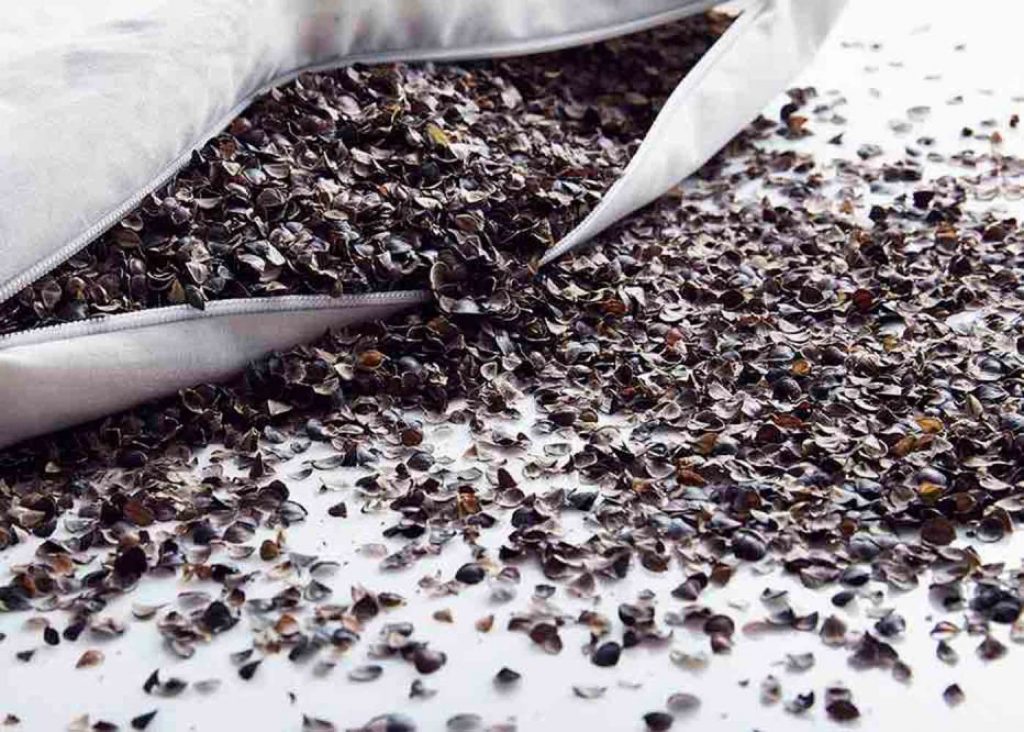
As with all things in and around the bed, the right material can make or break a night’s sleep. If you sleep on something that does not fit your needs, the quality of your sleep and your body will immediately tell what’s going on.
Luckily, we don’t only have one material to choose from – nowadays, the bedding industry is flushed with different stuff and nowhere is this more valid than for pillows. In the following section, we have broken down the various types of material and explained what they are good for.
Latex
Latex comes in two forms – synthetic latex derived from petroleum-based sources and processed using the vulcanization process and natural latex sourced from tree sap with either the Dunlop or water-based procedures. You have to watch out for the natural material because some people are allergic.
For the side sleeper, the shape or the pillow’s mold surface can make a big difference. What we mean by this is simply whether the cushion has a slight indent or curvature in the center that cradles the head and supports the neck around the edges.
The durable latex is often shredded into noodles or small pieces and used as fill for the inside of a pillow – if processed in such a way, it is convenient because you can adjust the loft of the pillow by removing or modifying the small parts to increase or decrease height.
Memory Foam
Memory foam is a very popular material for pillows. The main reason for this is because the material shapes perfectly to the contours of the head, proving the highest level of cradling effect around. The viscoelastic nature of memory foam uses body heat to alter the surface area of the cushion. However, as most of our body heat escapes via the head, it can get sweltering.
If you really like memory foam as a side sleeper be sure to check those cooling elements such as copper, gel or a celled structure are infused or incorporated into the material for more a refreshing sleep.
The same as with latex, memory foam can come in a shredded form or separate particles – again, the top-grade solution for adjusting the loft of the pillow through adding and removing of the pieces for height.
Buckwheat
Buckwheat is naturally sourced and hypoallergenic – it is the ideal pillow fill if you are allergic to natural latex or down feathers. Buckwheat is particularly prevalent in Asia where many people swear by it. The good thing about buckwheat is that it helps people with neck and back pain, including headaches caused by improper spinal alignment.
The buckwheat hulls are known to be exceptionally breathable thanks to the space between the individual kernels – heat and moisture are transferred from the cushion into the bedroom, allowing for a refreshing night’s sleep.
Not so positive is the rustling noise when you move. So, if you toss and turn during the night, you best avoid buckwheat altogether. As a side sleeper, you may not like buckwheat for your pillow because it is not as supportive and firm as latex – the hulls may shift, causing the head to sink in, putting a strain on the neck.
Gel
You may have encountered gel in combination with memory foams – we know for a fact that you already have because we have mentioned this material a few times in this article so far. Gel is ideally known for its cooling properties, which is why most brands include it in their memory foam products. It is the ideal heat conductor.
Also, like latex, gel is moldable, allowing for optimized surface contouring of the pillow to help cradle the head and align the cervical spine. For this reason, healthcare professionals like chiropractors are great advocates of gel cushions – they even suggest that it is perfect for side sleepers.
On the downside, a pure-play gel pillow without any memory foam elements may feel rather hard. The material is hypoallergenic, anti-microbial and extremely durable if it of a higher quality. In total, the top characteristic of this material is the fact that it conducts heat so well.
Cotton
Cotton is a natural fiber, and some top brands use all-organic cotton in their pillows. The good thing about cotton is that it is incredibly breathable as both a fill and a cover for the cushion. You will immediately notice if the outer layer is made of cotton because of the soft and to some point silky feel on your cheek.
But does it work well for sleeping on the side?
In short, cotton is not the very best stuff for side sleepers. Yes, it is smooth to the touch, and yes it is breathable, which is excellent especially if half the face comes into contact with the cushion. However, a cotton fill tends to bunch together over time, consequently reducing the efficacy of the support and thus the cradling of your head and neck.
Regarding cleaning, cotton is excellent. You can pop this all-natural fiber into the washed and heat things up to 140 degrees Fahrenheit.
Feather
Down feathers is the traditionalist in the bedding market and a favorite for many people. If you have already done some research on pillows for the side sleeper, then you have undoubtedly already seen that many bedding brands tout their synthetic materials as just as good as goose, duck or swan down feathers.
So, you see feathers are still a benchmark in the industry.
The material is very breathable, plush, cozy and supremely lavish. Hence the elevated cost of this pillow stuffing. Yet, more and more people are moving away from it because of animal cruelty and the fact that it does have the propensity to cause allergic reactions.
Also, when your down pillow arrives at your home, it will look very fluffy at first, but over time the fill loses its pizazz and tends to sag. Another thing to consider is that feathers are tedious and costly to keep clean – if you want to wash the cushion, you have to go to the dry cleaners.
Health Benefits of a Pillow Made for Side Sleeping
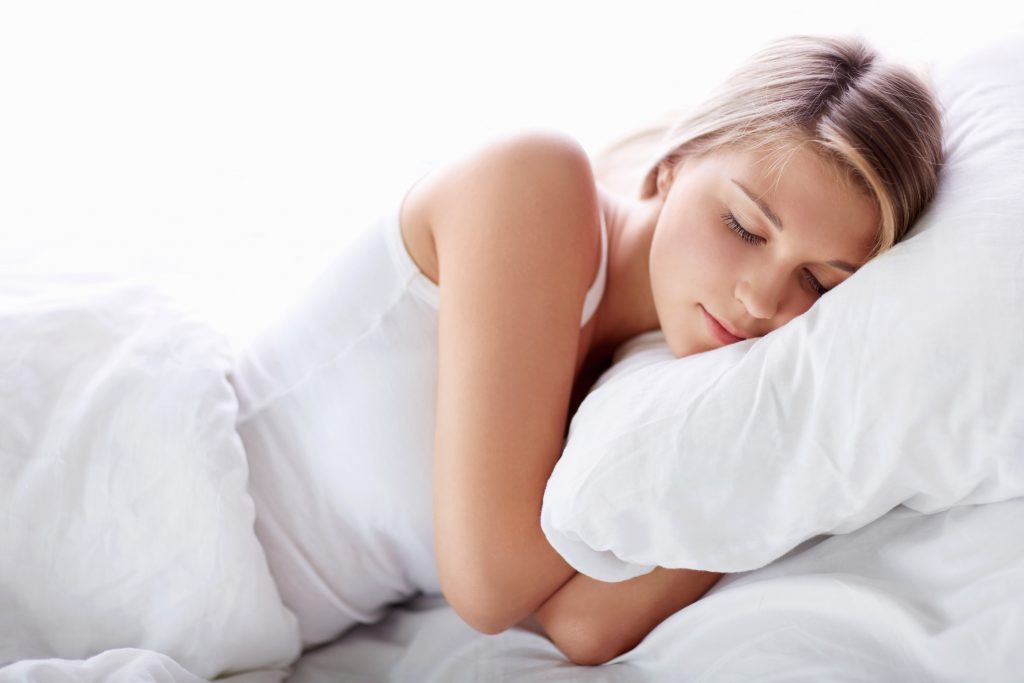
The majority of people in the world sleep on their side. And as many experts claim, it is not the best position to sleep because the pressure is put on the face, causing premature wrinkling. But the biggest challenge for any side sleeper is having most of the body’s weight placed on the shoulder.
The result is often shoulder, neck or back pain, depending on where most of the tension struck first. The right cushion can make a massive difference in countering the development of any discomfort. In the next section, we are going to look at what the right cushion can do for your health.
Better Sleep
Having your body aligned in the right position is half of the quality sleeping battle – the remaining half is made up of a quiet and serene atmosphere in the bedroom, fresh air, the correct room temperature and ultimately the proper bedtime rituals before bed, in short routine is king.
In order to align your body in the best way, a good mattress will definitely help – the problem with the mattress is that most of us think that the job is already done. But it isn’t. A suitable pillow is required, and even more so for side sleepers because of the way the body interacts with the sleeping surface.
As you know the shoulder bears most of the body’s weight. The best-rated pillows have the perfect loft so that the neck can slip onto the cushion and the head is cradled. Once there is no strain on the neck, you can drift off into blissful slumber and more importantly wake up without any discomfort.
No More Neck pain
Anyone who sits for extended periods of time risks tensions in the neck. Mostly they can be eased easily with stretching exercises and regular workouts. In rare cases, the discomfort can also be the result of serious diseases. But mostly in our sedentary world, neck pain is derived from lousy posture in and out of bed.
So, what can we do about it?
Tip: First, if you sleep on your side and have neck pain then you should read our guide.
We should take care of our muscles in the neck and shoulder area on a regular basis, just as we brush our teeth twice a day. Pushups while standing against the wall, stretching exercises such as head tilting, yoga, and endurance sports are particularly good neck exercises.
All of that is fine – staying fit is excellent. However, none of that will help if your pillow does not support the neck during the night. As we have seen throughout this article, the cervical spine needs alignment with the rest of the spinal column, and the head needs to be comfortably cradled.
We highly recommend you see our favorite pillows if you have a neck problem.
Shoulder Pain Relief
The shoulder joint’s anatomical structure allows for an enormous range of movement on three axes. The shoulder is often referred to as a ball joint, although strictly speaking, the shoulder consists of two joints: the flat ball joint, located between the humerus and scapula, and the ankle joint (AC joint).
The humeral head is surrounded and moved by several tendons and muscles. If a pain in the shoulder occurs, different structures can be responsible. In addition to muscles and tendons, bone, cartilage, bursa, or the articular capsule can also cause the pain. Frequent triggers for damage to these structures are overloads, injuries or degenerative changes such as osteoarthritis (joint wear).
In mostly medication, immobilization or physiotherapy are sufficient as therapy. Or in the worst cases, however, only surgery or even a joint replacement (shoulder prosthesis) can help.
But there is something else – the right pillow to relieve the shoulder joints from weight pressure of the body when we lie on the mattress – the correct loft is paramount here.
Reduce Snoring
As a side sleeper, snoring will most probably not be your primary concern. Sleep apnea or snoring heavily mainly affects people who lie on their back in bed. The cause for the snoring is the head tipping back too much and the tongue slipping to the back of your mouth and partially blocking the windpipe – the resulting sound is the air whistling or better said sawing past the obstruction.
Switching to the side cures most back sleepers’ snoring problem. However, there is that group of people, and it is not small, that snore regardless of their sleeping position – but it mainly has to with being overweight. Generally, the side sleep position is the best way to go to cure snoring.
If you are a down and out back sleeping supporter, it may be difficult for you to switch positions by the flick of a switch – body weight on the shoulder – how horrible – invest the top-rated pillow to get it right.
Get Less Wrinkles
Experts claim that sleeping on your side will cause premature wrinkling on the face. To be frank, we don’t need an expert to tell us that. Most of us who sleep on the side have woken up the next morning with an imprint on our cheek, making us look like half a version of ‘Freddy Kruger.’ In some cases, you can literally follow the seam of the cushion right across your cheek.
There are ways to counter the morning ‘Freddy Kruger’ look – the perfect pillow that is not too hard! Firstly, the cushion must reduce pressure to the face by supporting the neck so that the head does not tip downward too much. A slight degree of edge support around the pillow will solve the support issue.
The next step is to invest in soft and soothing pillowcases. Anything that scratches and irritates must be avoided. Cotton, bamboo and some high-quality polyester are an excellent solution.
Very Good Spine Alignment
A power play between the mattress and the pillow is the ultimate force when it comes to ensuring the correct spinal alignment for sleeping on the side. Firstly, the mattress supports the pelvic and hip area on the body by delivering just the right amount of uplift. Secondly, the sleeping surface is soft enough for the shoulder to sink until the spine between the shoulder and pelvis is aligned.
To keep this perfect alignment all the way up to the cervical spine and the head, the pillow now does most of the work. The mattress helped settle the shoulders, the height is right – pillows with loft that matches the height of the shoulder will pick up the neck and support it.
All strain has been removed from the neck muscles, and the head has come to rest on the cushion. If you had an x-ray and looked at the back from behind, you would immediately see that the spine is correctly aligned in this position.
Other Sleep Positions
Back
Most experts claim that sleeping on the back is the most recommended position. Now as ardent side position supporters we have a lot to say about that. Anyway, what defines a back sleeper?
If you lie on your back, you need different things from your mattress and pillow. On the one hand, the bed should be medium to slightly more firm. The buttock area on the body must be able to sink into the sleeping surface to a certain degree. Further up the physique, the shoulder blades need support, ensuring that the lumbar area on the back is not lifted away from the bed.
Any space between the back and the sleeping surface will cause muscle tension and ultimately pain. Now the body is in position, the head and neck require a pillow that is not too high and bulky. Having said that, some people like to have the head lifted slightly to avoid snoring. This is fine as long as the cushion puts not pressure on the neck.
Stomach
Lying on the stomach is the non-plus ultra for people in this position at night. They simply love the fact that the entire body front comes into contact with the mattress – it feels cozy and to a certain extent sexy.
The bed must work in harmony with the body by not being too soft so that an unnatural curve is created in the spine – caused by the pelvis sinking into the mattress. On the contrary, the bed must be firm enough to support this area. At the same time, a certain degree of give around the rib cage will allow for spinal alignment.
When it comes to pillows, the side sleeper needs as little loft and firmness as possible. If the cushion is too high, the head will tilt upward unnaturally and cause pain in the neck and possibly the head as well.
Got to: Our best-quality pillows for front sleeping if you want to learn more.
Our Top Pillows for Side Sleepers Review
Nest Bedding Easy Breather – Side Sleeper Favorite
Features:
- Fully loft adjustable
- Made in the USA
- Lifetime warranty
- 100-night free trial
Our Ratings: 9.7/10
The Nest Bedding Easy Breather is an all-time favorite for side sleep. One of the reasons for this is that you can adjust the height or loft by simply removing some of the shredded memory foam inside g the pillow – if you want more loft add the shredded elements back to the cushion.
Another serious plus about this product is the high-quality CertiPUR-US certified memory foam that contours to the shape of your head. And you don’t have to worry about overheating during the night because the shredded foam nature allows for heat transference and breathability. Nest Bedding has all their base covered.
Overall, the quality of this product is top-notch. As a side sleeper, the correct ergonomic posture in bed is guaranteed and also the Tencel cover is soft and pleasant for the skin. It is no wonder that the Nest Bedding Easy Breather is an all-time favorite for sleepers.
Layla – Best Value
Features:
- Lifetime warranty
- Copper-infused for superior cooling
- Made in the USA
- Free shipping
Our Ratings: 9.5/10
Most people have heard of Layla merely because they make excellent bedding for perfect value for money. And this offering covers everything from the mattress to pillows.
Layla has come up with an ingenious way to take the heat out of memory foam through the use of copper elements throughout the cushion. This metal is renowned as a heat conductor – what happens is that the copper cells inside the pillow compress and transfer any excess heat out from the material.
You are bound to get super refreshing sleep because this technology works like a dream.
Copper allegedly also has anti-inflammatory properties, which is ideal if you suffer from any joint or muscle discomfort. But what we like is Layla’s inclusion of all-natural Kapok fiber with the memory foam to create a synthetic and natural hybrid pillow – the natural element from the Kapok tree gives off the feeling of sleeping on goose or duck down.
Purple – Unique Design
Features:
- Unique and patented material and design
- Best deals during national holidays
- Try it out for 100-nights
- Great American brand
Our Ratings: 9.3/10
Sleep purple is what the company says, and you can certainly do that with a combination of a pillow and mattress.
But what makes products from this brand stand out the most is the unique design. Purple has created a pillow that is made of hyper-elastic polymer, which is arranged into a head-targeted smart grid. The brand claim that this design will never break or lose shape – pretty cool offer when it comes to pillows for side sleeping if you ask us.
The cushion itself offers the highest level of support to the neck and optimal cradling of your head. And the smart grid ensures that any heat trapped inside of the cushion is efficiently transported away – cool and refreshing sleep guaranteed.
And you don’t have to worry that this product is made of synthetic materials because Purple only use the very best CertiPUR-US certified elements.
Our Final Thoughts
We have traveled the road of the best pillows that are great for side sleeping, and we have seen how many things impact the quality of a good night’s rest. If you get it wrong, a spiral of problems can arise, and most of them affect your neck and head. Remember that adding undue stress to the neck can cause migraines.
We’d like to say that the right pillow for side sleepers is a purely subjective matter but we can’t. First and foremost the cushion needs to perform its duties. After that, you can worry about whether you are memory foam or a latex fan.
Just to recap – the pillow’s main objective if you sleep on your side is to ensure that spinal alignment is maintained throughout your back all the way up to the head. Teamwork between the mattress and the pillow make this possible – hip is supported, and the shoulder has the perfect amount of give – the pillow edge supports the neck, and the center cradles the head.
There it all is, nice and short. We have reviewed our top picks for side sleeping and hope that you now have a head start when it comes to choosing your pillow.
Resources:
- Pillow use: the behavior of cervical stiffness, headache and scapular/arm pain – https://www.ncbi.nlm.nih.gov/pmc/articles/PMC3004642/
- Snuggle Up With the Perfect Pillow – https://www.webmd.com/sleep-disorders/features/snuggle-up-with-the-perfect-pillow#1
- Your Guide to Healthy Sleep – https://www.nhlbi.nih.gov/files/docs/public/sleep/healthy_sleep.pdf

